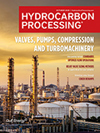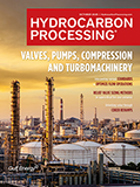Catalysts
Catalyst demand to increase over the next five years
The global demand for petroleum refining, chemical synthesis and polymerization catalysts will rise 5.8 %/yr to $19.5 billion in 2016, as listed in Table 1. The growth is directly related to increasin..
Catalyst news
Catalyst development—both fundamental and applied scienceHaldor Topsøe’s HyBRIM catalyst technology is an improved production technique for both CoMo and NiMo hydrotreating catalysts. C..
WR Grace emerges from bankruptcy after 13 years
US-based catalysts and specialty chemicals company WR Grace has emerged from bankruptcy nearly 13 years after filing for Chapter 11 protection over a series of asbestos claims.
Russian refiners use oxygenates to preserve octane
A case study was conducted regarding the physical and chemical properties of key gasoline oxygenates, such as methyl tertiary butyl ether (MTBE), tertiary amyl methyl ether (TAME) and other blending components.
Improve the isomerization of alkanes by catalytic distillation
The isomerization of light gasoline fractions is crucial to producing high-octane fuels and to reducing the benzene content in gasoline. One of the most promising options for isomerization is catalytic distillation.
Porocel acquires Medicine Hat catalyst processing facility from Criterion
The Medicine Hat facility will be Porocel’s fourth catalyst regeneration, rejuvenation and ex-situ presulfurization plant globally and strategically positions Porocel to service the Canadian market.
HP News
US, Norway seek to improve CO2 capture The US and Norway have announced their commitment to support the global carbon capture and storage (CCS) test center network. In a joint release, the two co..
BASF to expand India emissions catalysts capacity
Construction of a new 47,000 square meter facility will begin in December 2013, enhancing the company’s existing emissions catalysts operation in Chennai with new production lines and manufacturing capabilities. Startup is of the new catalyst capacity is planned in the first quarter of 2015.
HP Forecast: HPI Market Data 2014 Executive Summary
This summary provides a "sneak peek" at Hydrocarbon Processing's HPI Market Data 2014. This comprehensive report investigates present and projected future trends in refining, natural gas and petrochemical industries. Topics include spending forecasts and construction projects derived from HP's Construction Boxscore database; global and regional changes in energy production and use; and developments in oil and natural gas processing. HPI Market Data 2014 also covers trends in economics, plant safety and the environment. This annual report is the hydrocarbon processing industry's premier source of market information for professionals working in the downstream.
HP Innovations
Software combines crude management with designInvensys released its integrated Spiral CrudeSuite crude oil knowledge-management software (Fig. 1) with its SimSci PRO/II design and ROMeo optimization s..

- Verso Energy awards FEED contract to Rely for the DEZiR eSAF project 11/17
- Iran confirms seizure of tanker with petrochemical cargo headed for Singapore 11/17
- Asian gasoline margin spikes to highest since August 2023 11/14
- Lukoil-Moldova grants free use of airport fuel terminal to government amid U.S. sanctions 11/14
- Croatia rejects Russian vacuum gasoil cargo after U.S. sanctions 11/14
- Bulgaria wins UK sanctions reprieve on refinery, petrol stations 11/14




